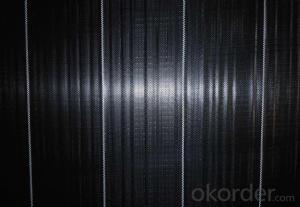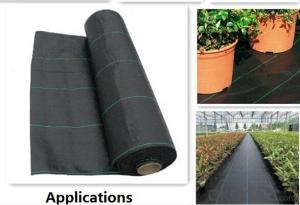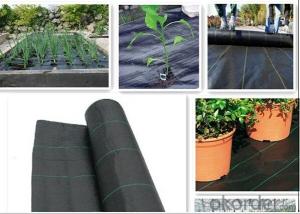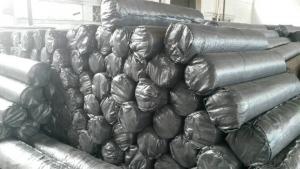Ground Control Fabric/Landscape Fabric for Garden
- Loading Port:
- China main port
- Payment Terms:
- TT OR LC
- Min Order Qty:
- 1000 m²
- Supply Capability:
- 10000 m²/month
OKorder Service Pledge
OKorder Financial Service
You Might Also Like
1. Landscape Fabric Description:
It used to prevent the growth of weed, without the use of potentially dangerous chemical sprays or labor intensive hoeing. Once installed, weed mat will continue providing protection for years without maintenance.They are permeable fabrics, which allow air, water and nutrients to pass through, and designed to block out the sun to reduce photosynthesis and stop weed growth.

2. Landscape Fabric Specification:
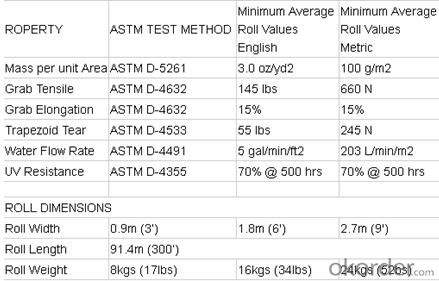
3. Landscape Fabric Functions and Features:
1)Excellent weed control
2)Excellent UV resistance
3)Moisture,fertilizers,air reach plants to allow for healthy soil
4)Good water and air permeability
5)Exceptional toughness and strength
6)Durable,tear-resistant,anti-rot and anti-mildew
7)Light weight,easy to install,follows natural ground contours
8)Ideal for use in landscaped beds,under decks and walkways
9)Fashionable design,high quality,competitive price
10)Long service life
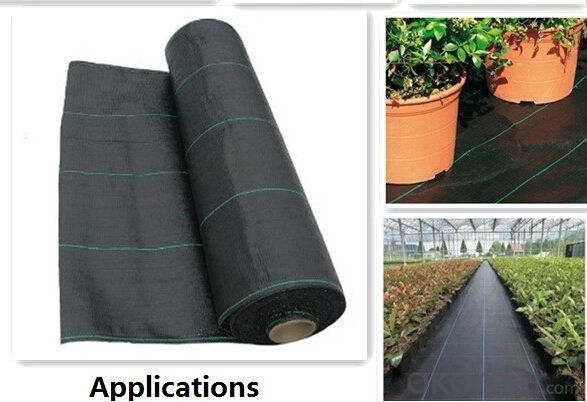
4. Landscape Property:
1) Light weight, high strength, low elongation, easy to construct.
2) Reinforcement, separation, drainage and filtration, fencing function, etc.
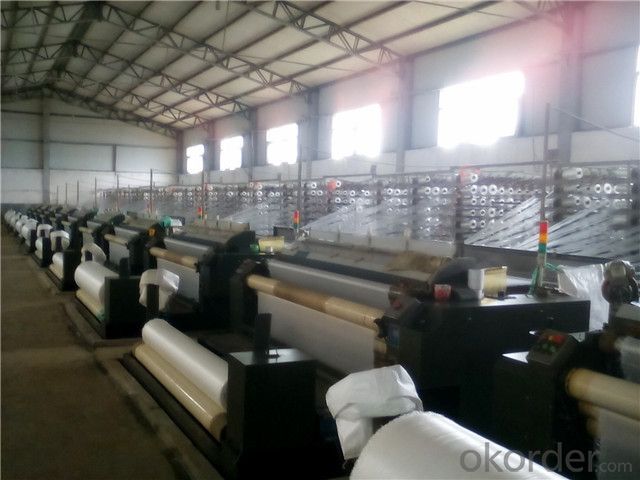
5. FAQ:
Q1: How about your company?
A1:Our company are one of the largest geosynthetic products supplier in the world.We have the products experience more than 20 years.Already export to USA/Germeny/Australia/Zambia/Brazil etc.more than 20 countries.Almost 10years.Our products including Geocell/Fiberglass Geogrid/Geomembrane/Geotextile/Geonet etc.
Q2:Can you send samples to us ?
A2:Yes , free samples could be provided , but customer need pay for the freight cost . After order placed , the freight charge could be refund .
Q3:What’s your Payment term ?
A3:T/T , L/C , Western Union,Paypal ...
Q4:What’s your manufacture process time ?
A4:Usually within 20 days.
- Q:Geotextile price is how much money
- Ask the geotextile price is too general, because the standard too much. Short wire, filament, polyester; non-standard, GB and so on. To Hongxiang Li Qian short wire geotextile price quote, for example, the price is generally between 4900-7500 yuan / ton, but the weight <200g, an increase of 100 yuan / ton; weight> 800g, an increase of 500 yuan /Ton. 187 & lt; 6600 & lt; 5604
- Q:Can geotextiles be used in green roof systems?
- Yes, geotextiles can be used in green roof systems. Geotextiles are often used as a separation layer between the growing media and the drainage layer in green roof systems. They help to prevent the mixing of different layers, while still allowing water to drain through. Additionally, geotextiles can also be used to reinforce the root barrier in green roof systems, providing added stability and protection.
- Q:How do geotextiles help with soil reinforcement in geogrid applications?
- Geotextiles help with soil reinforcement in geogrid applications by acting as a separator and providing confinement to the soil particles. They prevent the intermixing of fine and coarse particles, improving the stability and load-bearing capacity of the soil. Additionally, geotextiles distribute the load over a larger area, reducing localized stresses and preventing soil erosion.
- Q:What are the different geotextile installation techniques in separation?
- There are several different geotextile installation techniques used in separation, including direct placement, trench installation, and overlapping. Direct placement involves laying the geotextile directly on the ground surface, while trench installation involves placing the geotextile in a trench dug along the separation area. Overlapping is another technique, where multiple layers of geotextile are overlapped to form a continuous barrier. These installation techniques help to prevent the mixing of different soil layers and provide effective separation between different materials.
- Q:How do geotextiles contribute to the safety of transportation infrastructure?
- Geotextiles contribute to the safety of transportation infrastructure by providing reinforcement, filtration, and separation functions. They help in stabilizing the soil, preventing erosion, and reducing the risk of settlement or failure of the roads, embankments, and retaining walls. Geotextiles also enhance the drainage system, allowing water to flow through while preventing the accumulation of excess moisture, which can weaken the structure. Overall, geotextiles play a crucial role in improving the durability, stability, and longevity of transportation infrastructure, ensuring safer and more reliable roadways.
- Q:Can geotextiles be used in railway track construction?
- Yes, geotextiles can be used in railway track construction. Geotextiles provide various benefits such as soil stabilization, drainage, filtration, and separation. They can be used to improve the performance and longevity of railway tracks by providing reinforcement, preventing soil erosion, and reducing maintenance requirements.
- Q:Can geotextiles be used in the construction of green roofs?
- Yes, geotextiles can be used in the construction of green roofs. Geotextiles are often used as a layer in green roof systems to provide drainage and filtration, helping to manage water flow and prevent erosion. They can also help to separate different layers of the green roof system and provide stability to the growing medium.
- Q:Are geotextiles resistant to rodent penetration?
- Yes, geotextiles are generally resistant to rodent penetration. Their dense and tightly woven structure makes it difficult for rodents to burrow through or chew on the material.
- Q:Geotextile detection frequency
- First according to customer requirements grams / square meters, thickness, width, with or without the use of chemical fiber requirements, proofing, and the proofing process parameters, including feed speed, other machines and other parameters of the speed record, Do twenty to ten meters, to test, if qualified, to do so, a lot of bulk, do a few days and then try to seize what the general geotextile manufacturers themselves to prepare several commonly used testing equipment,
- Q:Can geotextiles be used in the construction of landfills?
- Yes, geotextiles can be used in the construction of landfills. Geotextiles are often used as a barrier or separator material in landfill construction to help with soil erosion control, filtration, and drainage. They can also enhance the stability and overall performance of the landfill by preventing the mixing of different layers and providing reinforcement.
1. Manufacturer Overview |
|
|---|---|
| Location | |
| Year Established | |
| Annual Output Value | |
| Main Markets | |
| Company Certifications | |
2. Manufacturer Certificates |
|
|---|---|
| a) Certification Name | |
| Range | |
| Reference | |
| Validity Period | |
3. Manufacturer Capability |
|
|---|---|
| a)Trade Capacity | |
| Nearest Port | |
| Export Percentage | |
| No.of Employees in Trade Department | |
| Language Spoken: | |
| b)Factory Information | |
| Factory Size: | |
| No. of Production Lines | |
| Contract Manufacturing | |
| Product Price Range | |
Send your message to us
Ground Control Fabric/Landscape Fabric for Garden
- Loading Port:
- China main port
- Payment Terms:
- TT OR LC
- Min Order Qty:
- 1000 m²
- Supply Capability:
- 10000 m²/month
OKorder Service Pledge
OKorder Financial Service
Similar products
New products
Hot products
Related keywords
